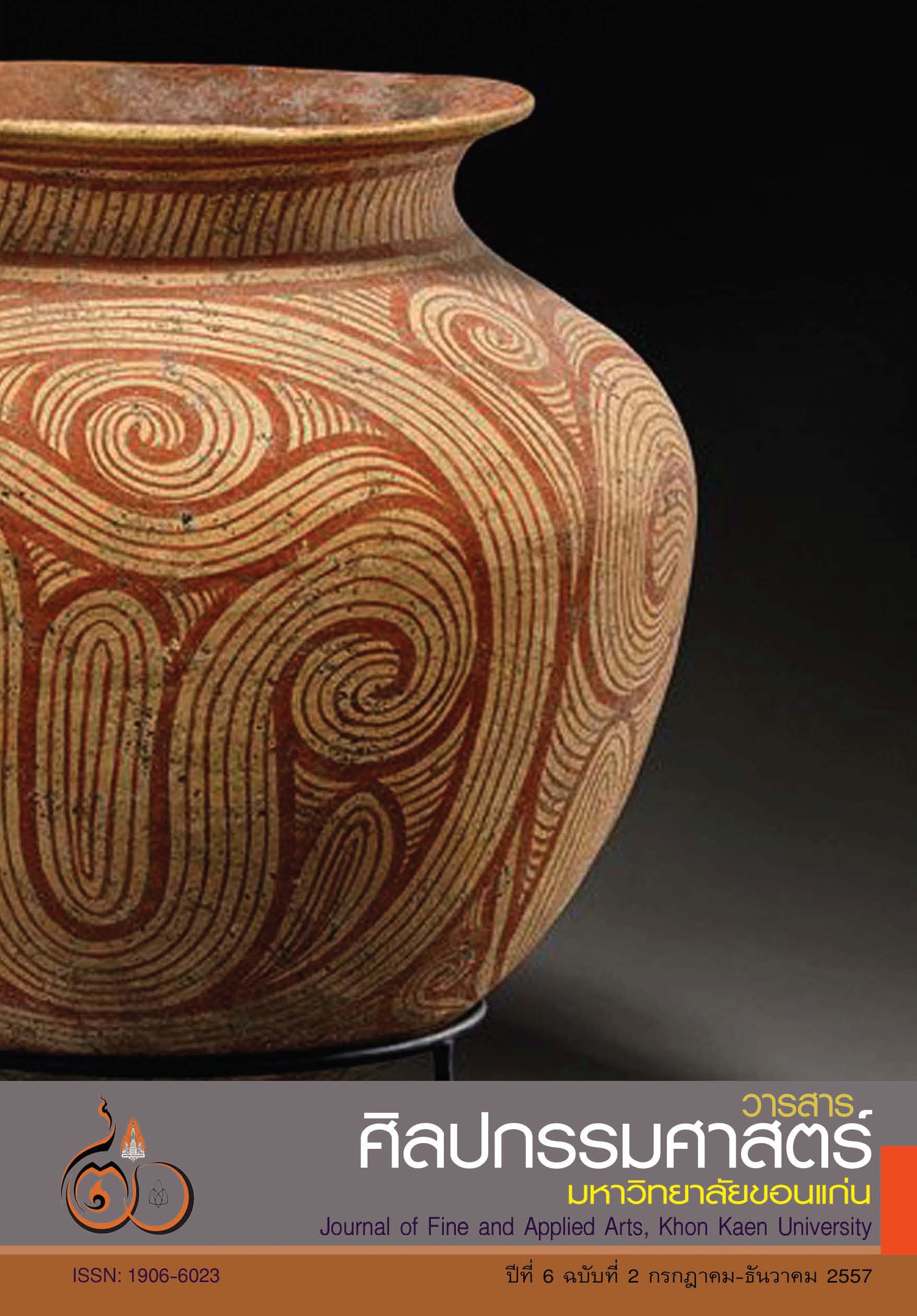ศิลปวัฒนธรรมบ้านเชียงในงานออกแบบผลิตภัณฑ์จักสานประเภทของตกแต่งบ้าน Ban Chiang Art and Culture in Wickerwork Product Design of Home Decoration Products
Main Article Content
Abstract
วิจัยครั้งนี้มีวัตถุประสงค์ เพื่อศึกษาศิลปวัฒนธรรมบ้านเชียงแล้วนำมาสรุปเป็นแนวทางในการออกแบบผลิตภัณฑ์จักสานประเภทของแต่งบ้าน พร้อมประเมินผลงานโดยการเปรียบเทียบผลิตภัณฑ์2แนวทาง โดยศึกษาและค้นคว้าจาก นิตยสาร วาสาร บทความ งานวิจัยที่เกี่ยวข้อง และการลงพื้นที่สัมภาษณ์ประชากรกลุ่มตัวอย่าง เน้นการศึกษา ศิลปวัฒนธรรมบ้านเชียง ด้านวิถีชีวิต ความเชื่อและโบราณวัตถุ พบว่าเทคโนโลยีด้านเครื่องปั้นดินเผา สามารถแสดงออกถึงร่องรอยของศิลปวัฒนธรรมบ้านเชียงที่ปรากฏอยู่ในปัจจุบันได้ชัดเจนที่สุด ซึ่งเทคโนโลยีด้านเครื่องปั้นดินเผา มีคุณลักษณะอันโดดเด่น ได้แก่ รูปทรงประกอบด้วยทรงโถ กระโถนปากแตรก้นกลมและกระโถนปากแตรก้นมีฐาน ส่วนลวดลายประกอบด้วย ลายวนคู่ ลายวนเดียวและลายวนต่อเนื่อง ซึ่งคุณลักษณะทั้ง 2 อย่าง สามารถนำมาประยุกต์ใช้เป็นแนวทางในการออกแบบผลิตภัณฑ์จักสานประเภทของแต่งบ้าน คือ กลุ่มรูปทรงและกลุ่มลวดลาย อีกทั้งยังสามารถนำเอาแนวทางการออกแบบดังกล่าว มาปรับใช้ในงานผลิตภัณฑ์จักสาน รูปแบบอื่นๆต่อไป
This research aims to examine Ban Chiang art and culture in order to adapt it as a guideline for designing weave products for home decoration. The data in this research were gathered purposively from magazines, journals, articles, relevant research studies and interviews with subjects of the study, emphasizing on Ban Chiang art and culture, way of life, beliefs and ancient artifacts. The findings showed that the technology of pottery in the present could reflect traces of Ban Chiang art and culture. This technology of pottery has the following distinguished features: vase shape, spittoon with trumpet-shaped mouth and round bottom and spittoon with trumpet-shaped mouth with a base. The findings also found that the patterns on the pottery consist of double circular pattern, single circular pattern and continuous circular pattern. These two groups of findings can be adapted as a guideline for designing weave products for home decoration in 2 categories, shape and pattern. Furthermore, this guideline of designing can also be applied to other types of weave products.
Article Details
Content and information in articles published in the Journal of Fine and Applied Arts of Khon Kaen University is regarded as the opinion and sole responsibility of the author(s) directly; therefore, editors are not obliged to agree to or share any responsibility with regard to the content and information that appears within these articles.
All articles, information, content, image, etc. that have been published in the Journal of Fine and Applied Arts of Khon Kaen University is the copyright of the Journal of Fine and Appllied Arts of Khon Kaen University. Any person or organization who wishes to distribute all or parts of the articles for further dissemination or other usage must first receive permission from the Journal of Fine and Applied Arts of Khon Kaen University before proceeding to do so.


